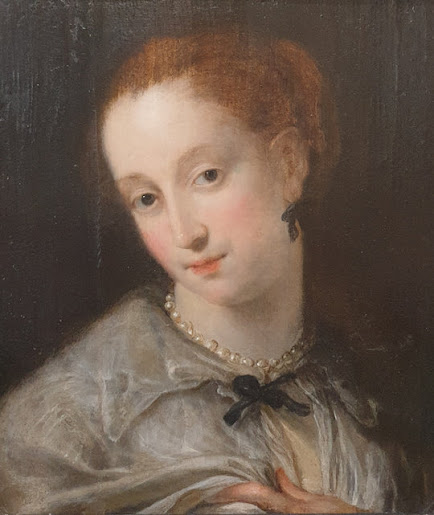C.R.Ashbee & the Arts and Crafts Movement
The Arts and Crafts movement took place largely between 1860 and 1910. One of the most far reaching movements of modern times, it started primarily in Britain and spread internationally to Europe and North America. With industrialisation affecting the decorative arts in terms of design and manufacture, the movement stemmed from the ideals surrounding the art and joy of craftsmanship. Taking things back to a more traditinoal way of working, Arts and Crafts designers often took inspiration from romantic, medieval and folk decorative styles.
 |
| A silver brooch with enamel of honesty, set with a central star sapphire. English. Circa 1902. C.R.Ashbee/Guild and School of Handicraft |
We are seeing a similar resurgence in craft now, with people moving away from mass produced items and instead seeking the handcrafted. Just as it was then, more people value quality of design, materials, and craftsmanship. This is also one of the many reasons people collect antiques and can partly explain the current trends for antiques and 'vintage'.
There were many people who played a part in founding and encouraging this movement, notably writer John Ruskin and designer William Morris. However in this post we will take a closer look at the work of Charles Robert Ashbee, an English designer who's work can be found at Van Den Bosch’s stand in Grays.
C.R.Ashbee most notably founded the Guild and School of Handicraft in 1888. It's aim was to promote the value of the craftsman and their work to the wider public. Starting out in temporary workshops in Whitechapel, London, the Guild expanded to Essex House on Mile End Road and opened a shop on Brook Street, just near Grays current location in Mayfair. In 1902 the workshops moved to Chipping Campden in Glouchester where they stayed until the business closed in 1907.
 |
| A hammered silver two handled cup. Marked ‘C.R.A.' for Charles Robert Ashbee. Hallmarks for London 1900. |
.jpg) |
| Snowdrop pendant necklace set with a central enamel and turquoise drops. This piece comes with the original Guild of Handicraft Ltd. case and bill of sale for 1902. |

.jpg)

Comments
Post a Comment